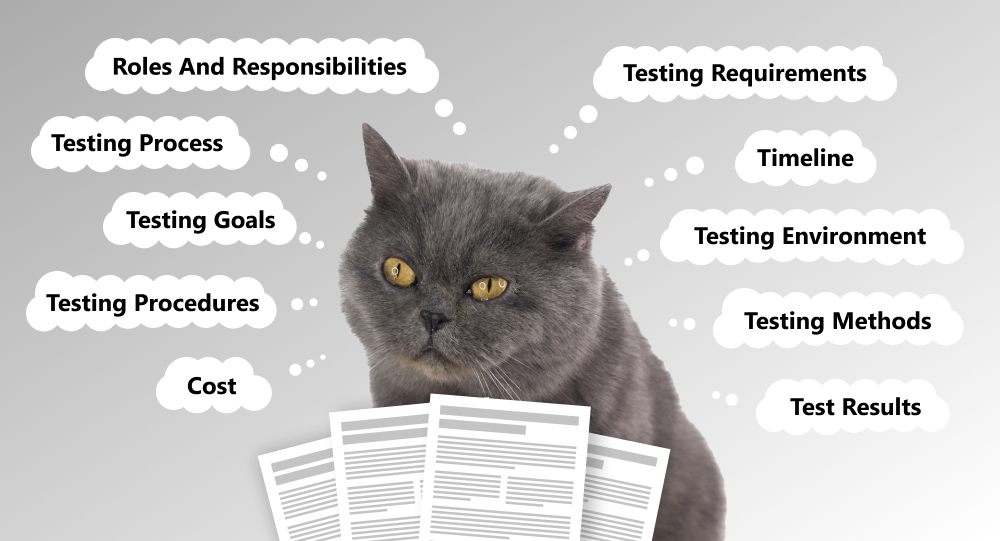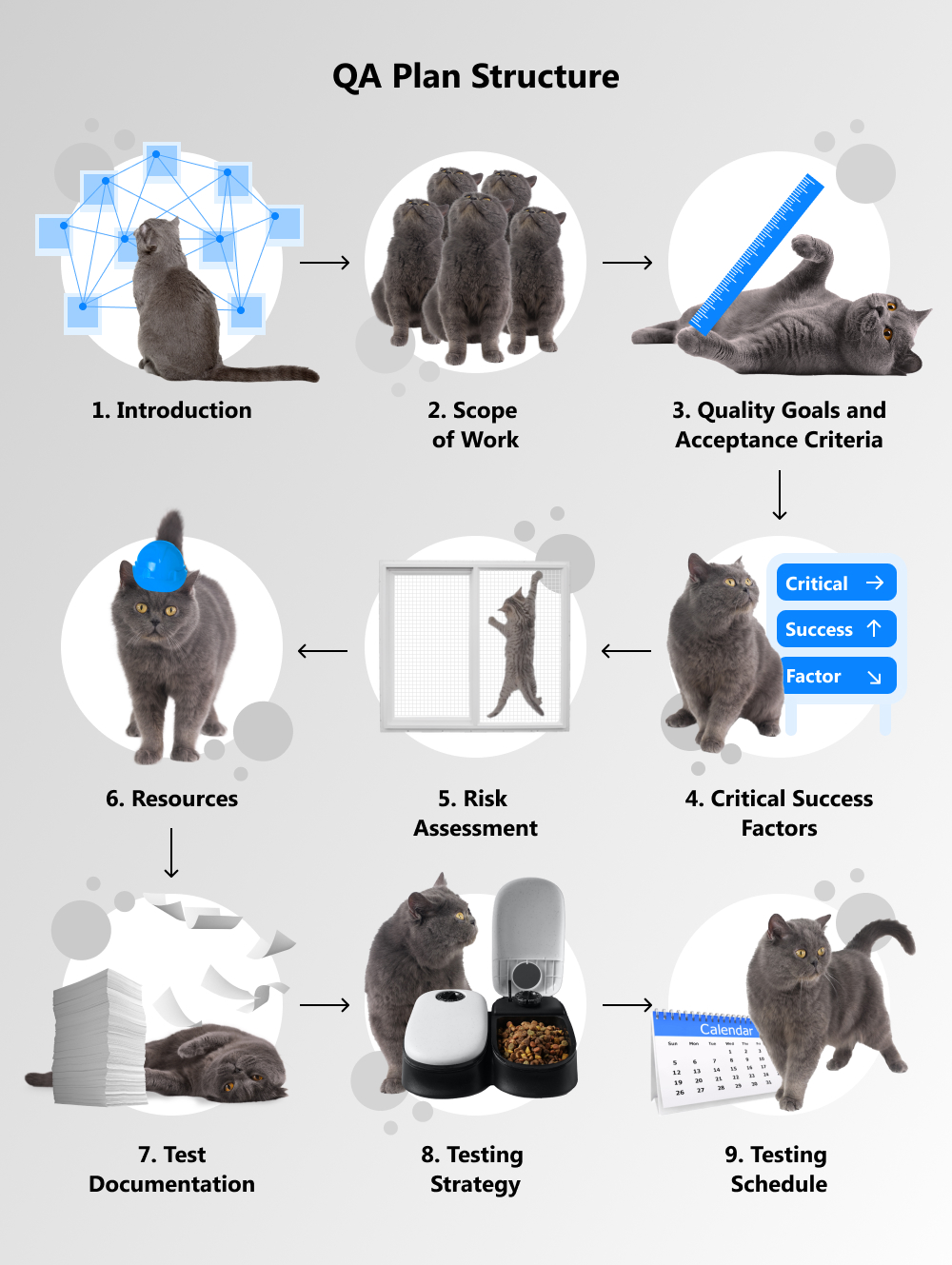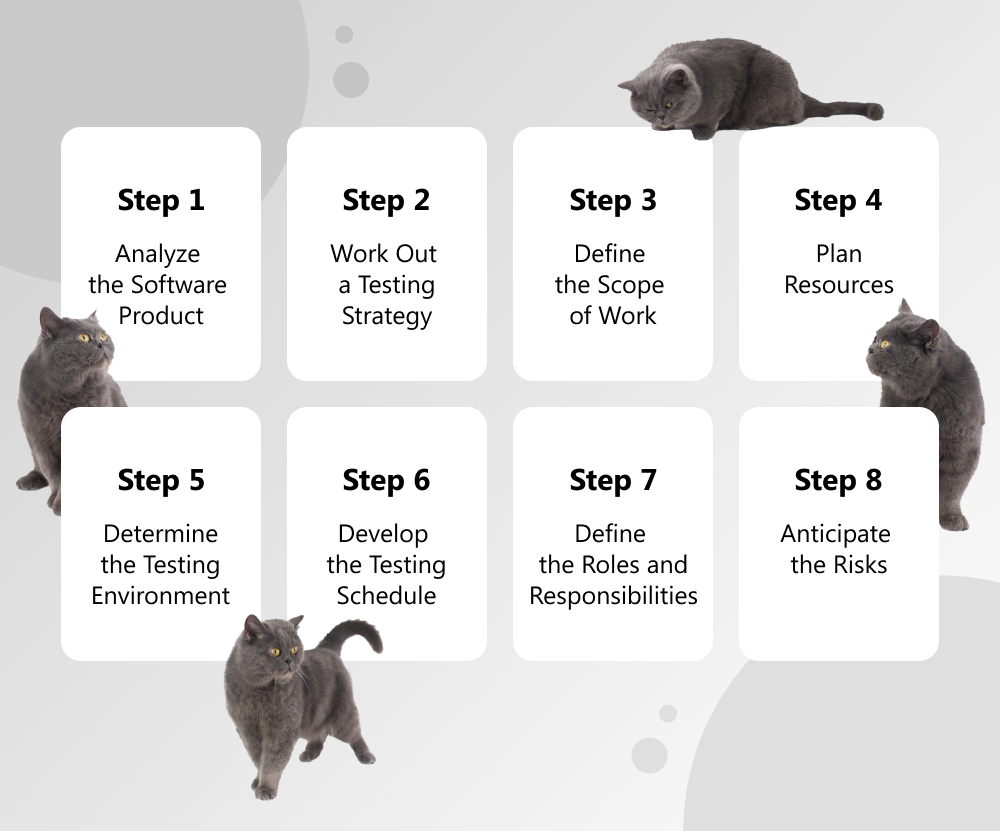Product failure in the market is a nightmare for any software developer. Inadequate quality control is one of the reasons why some solutions failed spectacularly. In 2020, US companies lost around $2.08 trillion due to poor software quality. That's why it's vital to perform all the required testing procedures. A quality assurance plan is an essential part of this process. Why? What are QA plans? What do they contain? What steps are needed to create an effective quality assurance plan? Who should draw it up? Keep on reading this article to find answers to these questions. Let's go!
written by:
Nadezhda Mal
Product failure in the market is a nightmare for any software developer. Inadequate quality control is one of the reasons why some solutions failed spectacularly. In 2020, US companies lost around $2.08 trillion due to poor software quality. That's why it's vital to perform all the required testing procedures. A quality assurance plan is an essential part of this process. Why? What are QA plans? What do they contain? What steps are needed to create an effective quality assurance plan? Who should draw it up? Keep on reading this article to find answers to these questions. Let's go!
Contents
What Is a Quality Assurance Plan?
A quality assurance plan is a detailed document prepared by the QA team. It describes the planning of the quality control and testing process. Its goal is to make sure that final products are of high quality and customers are satisfied with the goods or services provided by your company. The document usually contains guidelines for the testing process, such as approach, quality objectives, test results, environmental and resource requirements, schedule, and any possible risks and issues.
Why Do You Need a Quality Assurance Plan?
If you're wondering why you may need to spend your time on test planning and create a quality assurance plan, we'll give you several reasons for that.
- It allows you to understand how to carry out testing procedures. During the planning phase, you should define testing goals, establish priorities, identify testing requirements, and specify expected results. Answering these questions will allow you to estimate the cost of your project and determine the timeline.
- It contains detailed information about the testing environment and the business objectives of the software product under test.
- It helps the QA team determine the time and effort required to test the product.
- It acts as a guideline for your QA and testing process by determining an approach to QA and testing procedures and describing the testing methods to be followed.
- It clearly defines the roles and responsibilities of each team member, allowing them to know what to do.
- It provides a timeline according to which your company or a customer will be able to monitor and track the QA team's progress.
- It outlines the resource and hardware requirements that are needed to conduct the testing process.
Who Should Create a Quality Assurance Plan?
Quality assurance plans are usually prepared by QA team leads with the participation of other team members. The QA team lead describes quality goals, test cases, testing procedures, tasks of responsible persons, sets timeframes, and so on.
What Does a Quality Assurance Plan Contain?
Every QA team decides which sections will be included in the quality assurance plan. As a rule, they have the same structure and contain standard components that can be adjusted according to your needs and quality goals. So, your quality control document can consist of the following sections:
1. Introduction
This section describes the tested product, its features, testing objectives, quality assurance practices, testing tools, quality control activities, roles and responsibilities, target audience, as well as the requirements of the customer.
2. Scope of Work
In this section, you should specify which functions and components of your software or product will be tested and which ones won't. When defining the testing scope, you should take into account the demands of your customers, applicable standards, product specifications, skills, and experience of your QA team, as well as the budget of the project.
3. Quality Goals and Acceptance Criteria
The QA team must define the acceptance criteria by which it will assess the quality of the product and compliance with the client's demands. Simply put, it's a list of needs used to specify conditions under which your software or product will be tested.
The acceptance criteria are usually divided into two types:
- Suspension Criteria. When they are met, the QA team must suspend the tests until developers are able to resolve any problems. As a result, you will be able to meet the specified criteria. When it's done, testing procedures can be resumed. Imagine that the suspension criteria are to have 40% of the tests fail. When that failure rate is reached, the testing activities cease and developers have to resolve all the issues for the failed tests.
- Exit Criteria. Fulfilling these criteria means that the test phase has been completed successfully. They include targeted test results and are needed before proceeding to the next development steps.
4. Critical Success Factors
This section includes a list of factors that are needed to complete the project successfully. For instance, they include full access to the test management system or bug tracking system, no delays from developers, and others.
5. Risk Assessment
Taking into account all risks and issues related to your project is the most important part of your test plans. The QA team should always remember the risks involving tight schedules, incorrect estimates, or even QA team members who don't have the necessary experience or skills. Your quality assurance plan should include all these risks along with a set of actions to handle those issues.
6. Resources
This section describes all the key resources required for the testing activities: personnel, software, hardware, documentation, etc. It helps the QA team specify the resource quantity required for the tests and thus prepare the correct estimates and time limits. You can mention all the team members who are going to participate in the testing activities along with their responsibilities and roles in them. What's more, specify test tools, networks, test environment, hardware, and so on.
7. Test Documentation
Here the QA team should specify the project documents, such as quality assurance plans, test result reports, test cases, bug reports, etc.
8. Testing Strategy
This section should include:
9. Testing Schedule
In other words, it's the deadline for the project completion. It defines the timeline and milestones. It will help every member of the QA team to understand how much time it will take to test every feature of the product.
Step-by-Step Guide on How to Make a Quality Assurance Plan
So, when you know everything about quality assurance plans, it's time to figure out how to create a good plan. We've prepared a brief guide on how to do it.
Step 1. Analyze the Software Product
The first step to draw up a quality assurance plan is to analyze the product, its features and functionality to gain a deeper understanding. In addition, carefully study the requirements and goals of your customer to make sure that you will be able to build a smooth testing process and meet the client's demands.
Step 2. Work Out a Testing Strategy
When the first step is done, you can proceed to the development of your testing strategy for different levels. The QA team can use various testing practices and techniques depending on the business goals of the customer. At this stage, you can identify the types of testing, specify test objectives, and determine test criteria.
Step 3. Define the Scope of Work
A good quality assurance plan precisely defines the testing area and conditions. The QA team can use a requirements specification document to determine what is included in the scope of testing and what is not. For example, it may be useful to draw up a list of features that will be tested and a list of features that won't, making your plan specific.
Step 4. Plan Resources
At this stage, the QA team decides which resources are needed to perform the tests. They include the number of specialists, equipment, time, and money.
Step 5. Determine the Testing Environment
While planning the QA and testing process, you should define the testing environment. In simple terms, the QA team chooses the tools and instruments, which it's going to use to make sure the product is bug-free and meets the demands of the customer.
Step 6. Develop the Testing Schedule
When the QA team has developed the testing strategy and scope, it's time to establish time frameworks to carry out all testing procedures according to the QA plan.
Step 7. Define the Roles and Responsibilities
At this stage, the QA team lead clearly determines the roles and responsibilities of each member so that every person knows what to do to make sure that the product meets the demands of the customer and end-user.
Step 8. Anticipate the Risks
You must ensure that your quality assurance plan includes anticipated risks and describes appropriate risk responses.
Summing It Up
So, we've given the answer to the standard questions of what, who, why, and how. Please bear in mind that the quality assurance plan is an essential component of your quality control and testing process. With detailed and clear documentation, you'll be able to ensure the proper quality of your products, meet the demands of your customers and target audience, avoid big errors and bugs, envisage any risks, prepare response actions, and, finally, make progress.
Have you found our article useful? Feel free to leave your feedback. Our team hopes that this information will help you prepare effective quality assurance plans for your project. For more information on our services, check out our website.

Contacts
Feel free to get in touch with us! Use this contact form for an ASAP response.
Call us at +44 151 528 8015
E-mail us at request@qulix.com










